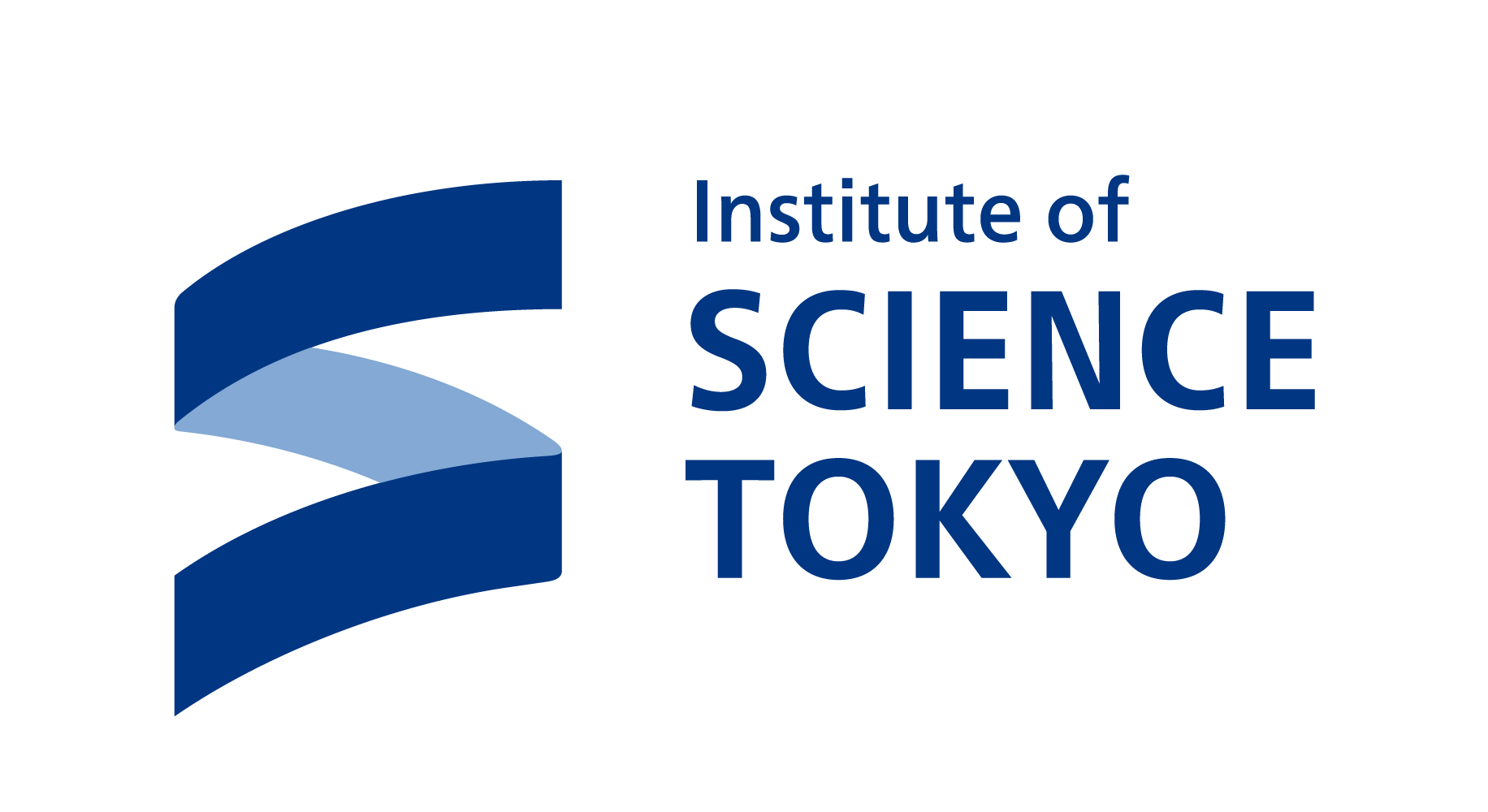
炭素材(修飾活性炭、カーボンフォーム等)やナノ材料(光触媒等)を用いた新規水処理技術の開発 / Development of Novel water treatment technology using carbon material (modified activated carbon, carbon foam etc) and nanomaterials (photocatalysis etc)
現代社会では10万種を超える化学物質が使用され、毎年数千種が新たに開発されている。このような化学物質の多くは新興微量汚染物質として下廃水に流入し、医薬品や殺虫剤、有機フッ素化合物(PFAS)、マイクロプラスチック等の難分解物は生物分解作用を受けずに環境中に放流される。従って、気候変動下における持続可能な水利用や健全な生態系保全の観点から、新興汚染物の適切な処理は重要な課題である。本研究では、光触媒法や電気化学法、吸着法など多彩なアプローチにより、難分解物の効率的処理法を開発する。例えば、
More than 100,000 chemicals are used in modern society, with thousands of new ones being developed each year. Many of these chemicals enter wastewater as emerging trace pollutants, while persistent substances such as pharmaceuticals and pesticides, organo-fluorine compounds (PFAS), microplastics, etc are released into the environment without undergoing biodegradation during the wastewater treatment process. Therefore, appropriate treatment of emerging pollutants is an important issue from the viewpoint of sustainable water use and healthy ecosystem conservation under climate change. In this study, we will develop efficient treatment methods for persistent pollutants using various approaches such as photocatalytic, electrochemical and adsorption methods.
【新規炭素材料を活用した新興汚染物質の促進酸化処理技術の開発 / Advanced oxidation process using a novel carbon material for emerging contaminant removal】
多くの新興汚染物は芳香族構造を有し、化学的に安定な環状共役系で構成されるため、生物難分解性を示すものが多く、従来の微生物処理(活性汚泥法など)においては処理効率が非常に低い。一方、物理吸着や化学酸化などを用いた処理など難分解性の新興汚染物の処理については多くの先行研究があるものの、材料資源や頑健性、さらには実環境中での処理妨害物の影響等が十分に考慮されていないことが多い。そこで、本研究では、新興汚染物を実環境条件で高効率に分解可能な促進酸化処理技術を開発することを目的とした。具体的には熱分解処理法などを活用してバイオマスから機能性の炭素材(多孔質性カーボンフォームなど)を合成することで、持続可能な促進酸化処理法の開発を目指した。そして、実環境を想定した新興汚染物質の酸化除去試験を行い、その性能を評価することで持続可能な水処理技術を提案した。
Many emerging contaminants have biologically persistent aromatic structures which are composed of chemically stable cyclic conjugates, and the treatment efficiency is low in conventional microbial treatment (activated sludge method, etc.). On the other hand, although there have been many previous studies on the treatment of persistent emerging contaminants, such as treatment using physisorption or chemical oxidation, but the material resources, robustness, and effects of treatment disturbance in the actual environment are often not fully considered. Therefore, the objective of this study was to develop an advanced oxidation treatment technology that can decompose persistent emerging contaminants with high efficiency under real-world conditions. Specifically, we aimed to develop a sustainable oxidation treatment method by synthesizing functional carbon materials (e.g., porous carbon foam) from biomass using pyrolysis treatment methods. Then, we proposed a sustainable water treatment technology by conducting oxidation and removal tests of emerging pollutants under realistic environmental conditions and evaluating its performance.
多孔質性カーボンフォームの開発/Development of porous carbon foam (figure from Zhang et al 2024)
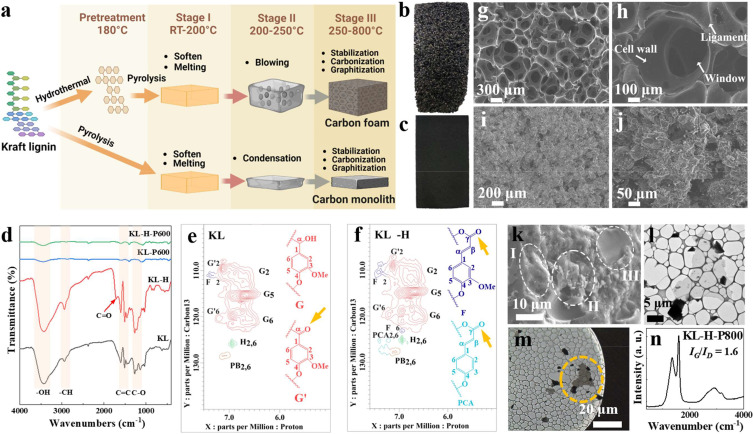
多孔質性カーボンフォームの電気フェントン反応への応用/Application of porous carbon foam to electro-Fenton reaction (figure from Zhang et al 2024)
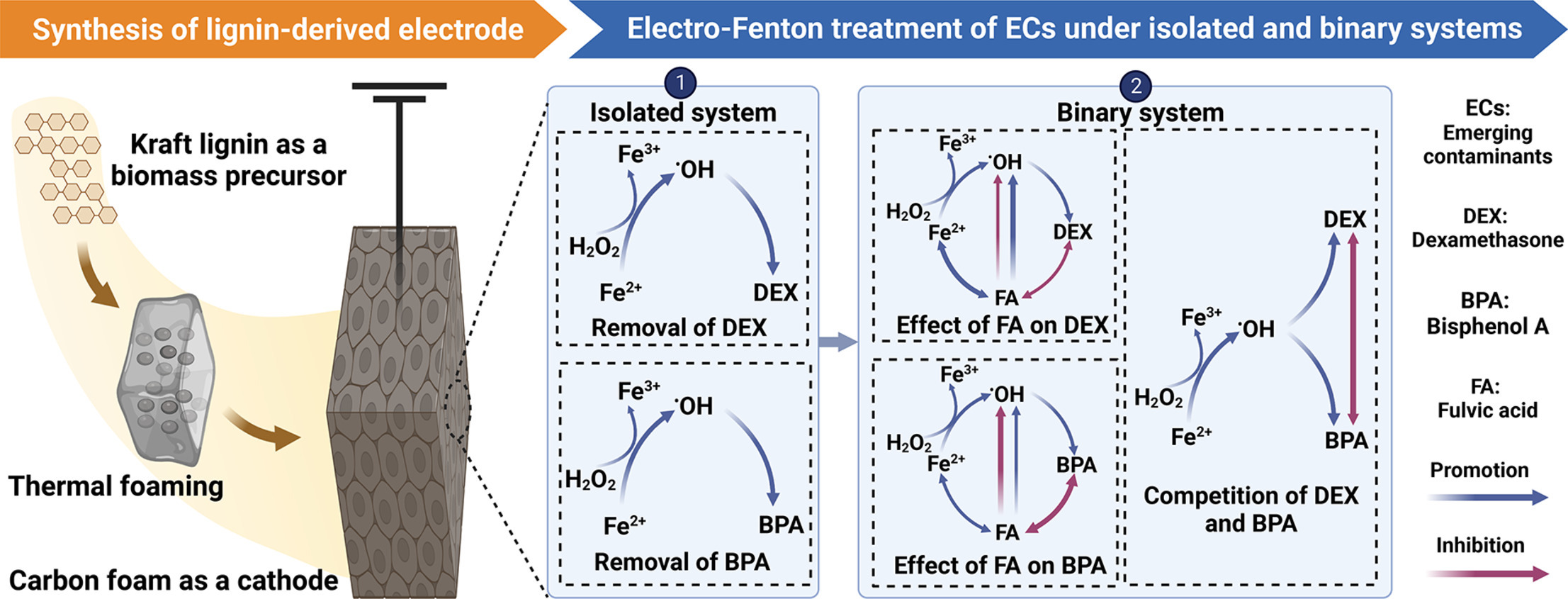
スイスロール電極を用いた電気化学的高度酸化プロセスによるカルボフランの効率的分解 / Swiss-roll electrodes for efficient degradation of carbofuran by electrochemical advanced oxidation processes (figure from Zhang et al 2022)
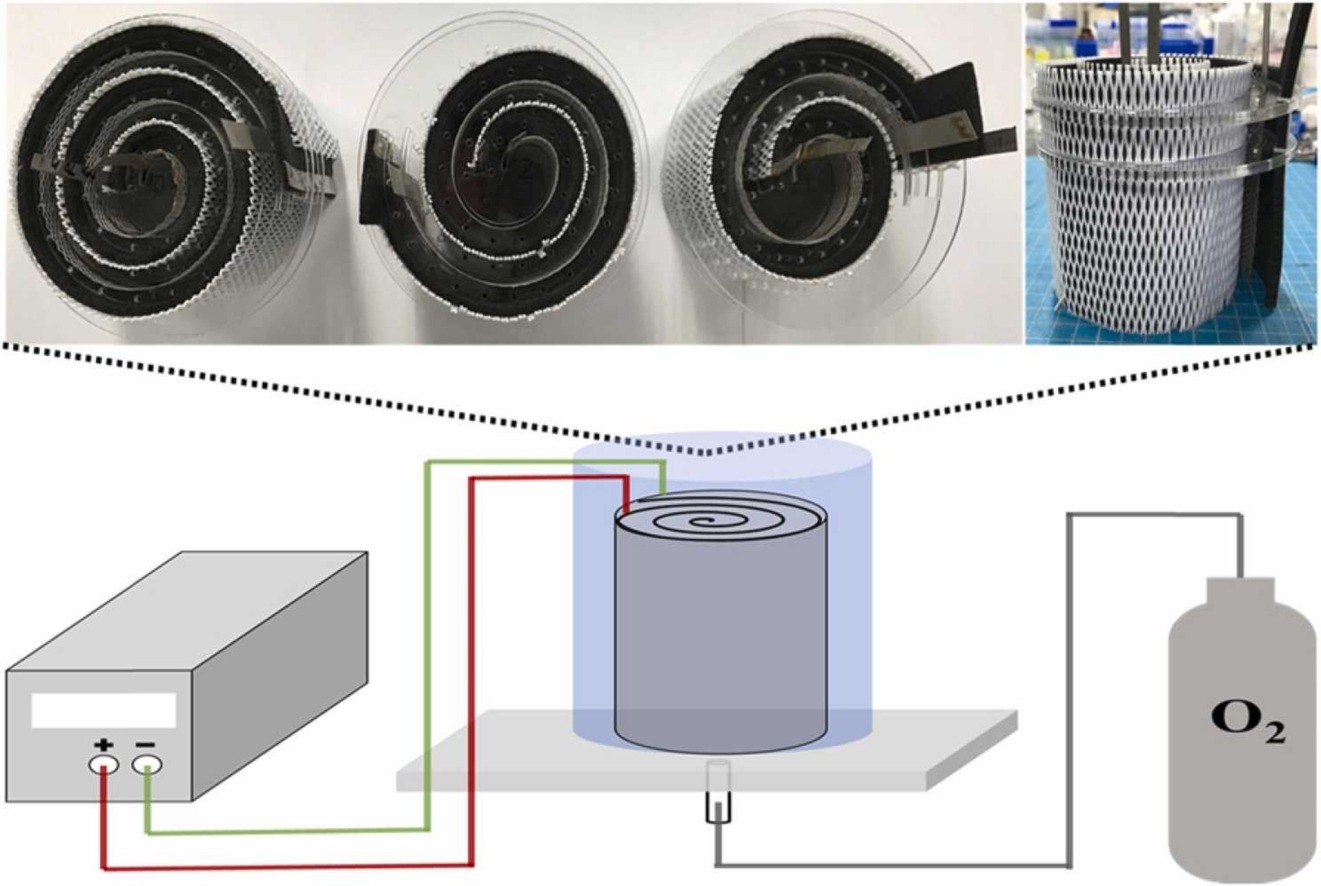
【アミン修飾炭素材料によるペルフルオロおよびポリフルオロアルキル物質(PFAS)の効率的吸着除去 / Efficient Adsorption Removal of Per- and Polyfluoroalkyl Substances (PFAS) by Amine-Modified Carbon Materials】
本研究では、商業用活性炭の表面をカチオン性ポリマーであるポリジアリルジメチルアンモニウムクロリド(PolyDADMAC)でコーティングし、陰イオン交換機能を担持させた。本アミン修飾炭素材はPFOAに対して優れた吸着容量を示し、PolyDADMAC添加率33%以上での吸着性能向上が確認された。さらに、実用化を見据えて低濃度PFOSに対する吸着性能試験も実施し、接触時間約数分間で十分な除去率が確認された。また、再生プロセスの検討についても行なった。本研究は持続可能なPFAS除去技術の確立に向けた重要な基盤を提供するものと考えられる。
In this study, the surface of commercial activated carbon was coated with a cationic polymer, polydiallyldimethylammonium chloride (PolyDADMAC), to carry anion exchange function. This amine-modified carbon material showed excellent adsorption capacity for PFOA, and improved adsorption performance was confirmed at a sufficiently higher dose of PolyDADMAC. In addition, an adsorption performance test was conducted for low concentrations of PFOS at natural water condition (with a view to practical application), and sufficient removal was confirmed after a contact time of approximately several minutes. The regeneration process was also investigated. This study provides an important basis for establishing a sustainable PFAS removal technology.
アミン修飾炭素材によるペルフルオロオクタン酸(PFOA)の吸着除去/Adsorptive removal of perfluorooctanoic acid by amine-modified carbon materials (Data and figures from presentation at JSCE conference, and Kato et al 2023 [加藤ら2023])
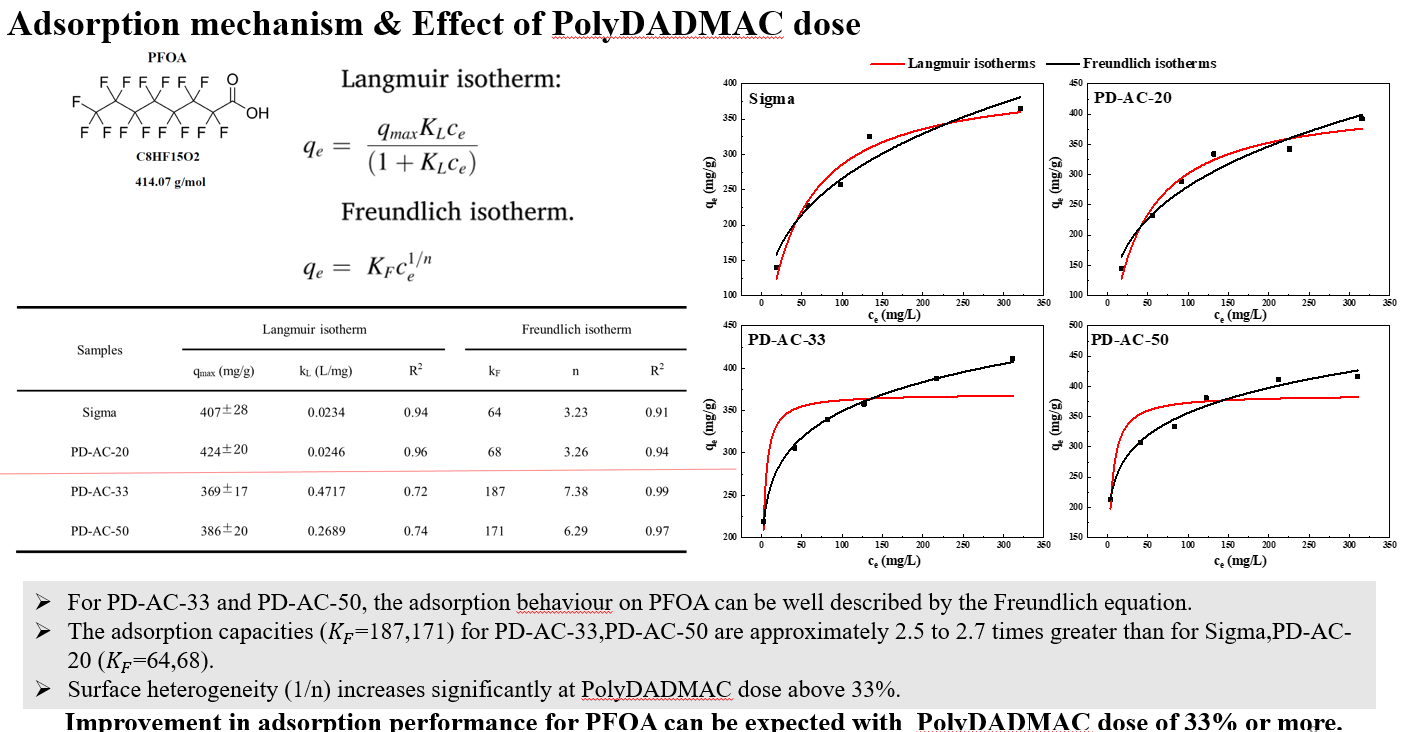
PFASの吸着除去と再生/Adsorptive removal regeneration of PFAS
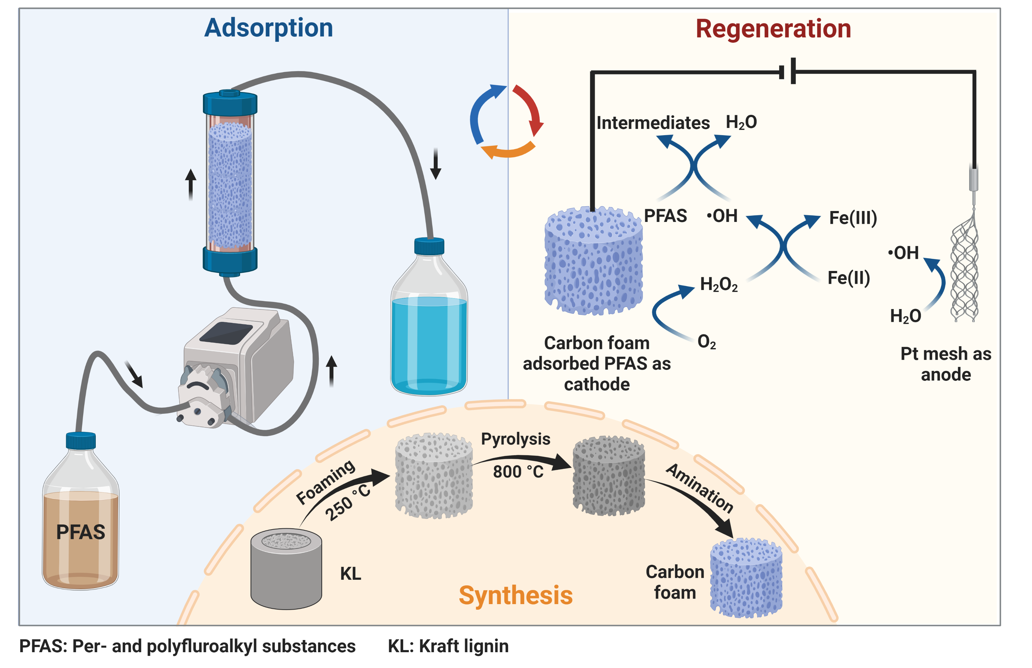
短鎖PFASに着目した吸着除去特性/Adsorptive removal for short-chain PFAS
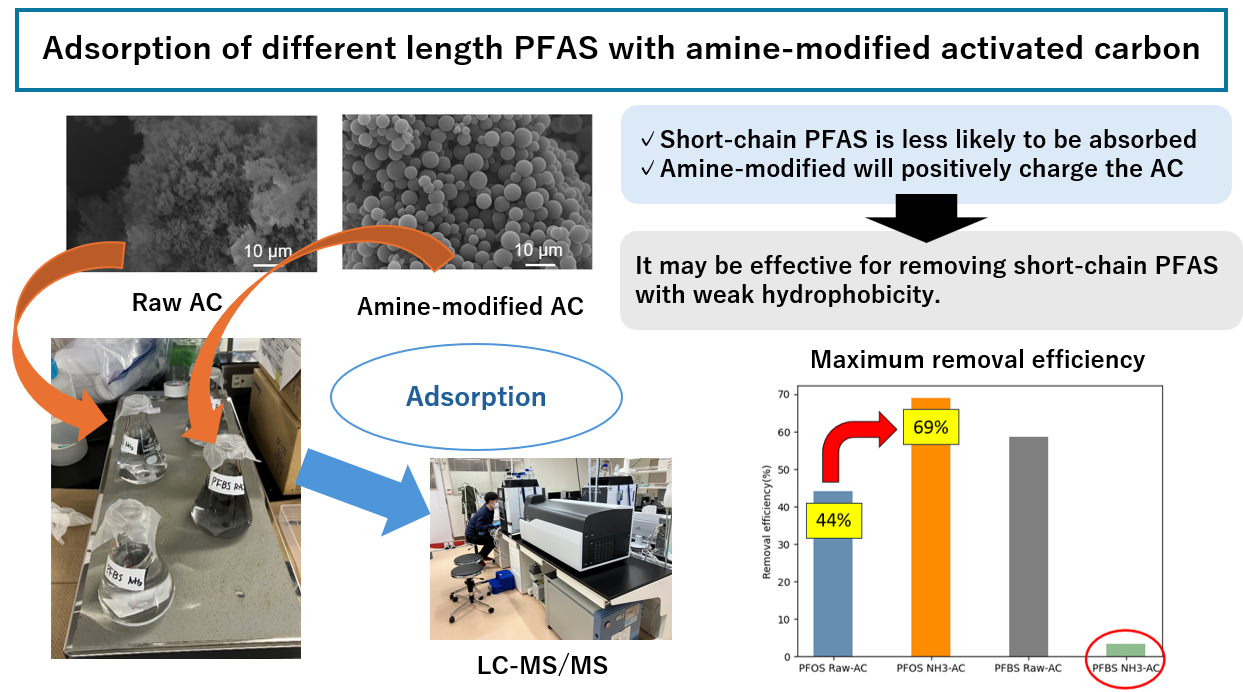
【ランタノイド系光触媒の開発と水処理への応用/Development of lanthanide-based photocatalysts and their application to water treatment】
量子ドットとランタノイドが量子力学的制約状態で発揮する光ルミネッセンス効果等により、量子収率を改善することで強酸化作用をもつ光触媒を開発する。反応機構の解明や効率化という学術的観点のみならず、流体力学に基づく反応槽の設計やライフサイクルアセスメントによる環境影響評価など社会実装を見据えた研究を推進する。
For example, we will develop photocatalysts with strong oxidizing effects by improving the quantum yield of quantum dots and lanthanides under quantum mechanical constraints, such as photoluminescence effect. In addition to the academic viewpoints of elucidating the reaction mechanism and improving efficiency, we will also work on the design of reactor based on fluid mechanics and life cycle assessment of environmental effects for social implementation.
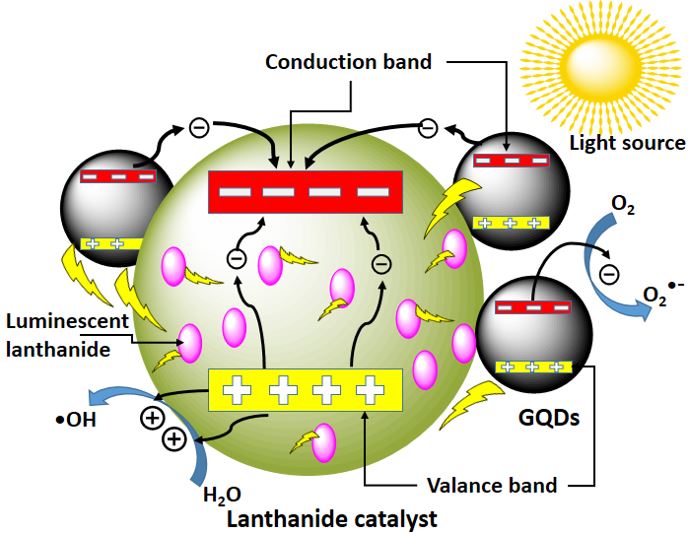
関連文献 / Reference
- B Zhang, T Isobe, Y Nabae, J Hu, Y Zhang, M Song, Y Wu, B Chen, …, Kraft lignin-derived multi-porous carbon toward sustainable electro-Fenton treatment of emerging contaminants, Resources, Conservation and Recycling 203, 107413, 2024
- B Zhang, T Hiramatsu, S Hamano, M Fujii, MG Alalm, S Yoshikawa, … Swiss-roll electrodes for efficient degradation of carbofuran by electrochemical advanced oxidation processes, Journal of Environmental Chemical Engineering 10 (6), 108801, 2022
- 加藤 大道, Bei ZHANG, 藤井 学, 磯部 敏宏, アミン修飾炭素材によるペルフルオロオクタン酸の吸着除去, 土木学会論文集, 79 巻 25 号, 2023 年, 論文ID: 23-25039, 2023
- 科研費挑戦的研究(萌芽) 2019-20年度「量子化学計算による高度処理での有機微量汚染物質の反応経路解析、等.

